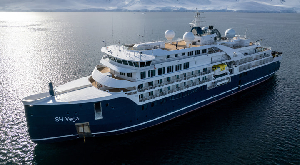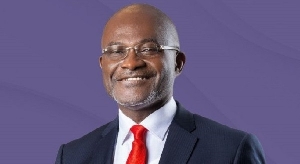- Home - News
- TWI News | TV
- Polls
- Year In Review
- News Archive
- Crime & Punishment
- Politics
- Regional
- Editorial
- Health
- Ghanaians Abroad
- Tabloid
- Africa
- Religion
- Election 2020
- Coronavirus
- News Videos | TV
- Photo Archives
- News Headlines
- Press Release
Business News of Sunday, 8 May 2016
Source: MasterCard Foundation
84.3m use mobile money: Report
The latest authoritative annual report from GSMA shows that more people are now able to access financial services using basic technology than ever before, especially in Africa, and often for the first time.
The GSMA State of the Industry Report on Mobile Financial Services 2015 shows that there are more than 411 million mobile money accounts in 93 countries. Mobile money providers are processing an average of 33 million transactions each day.
Clearly, mobile money is making huge advances: in 2015 registered mobile money accounts around the world grew by 31 percent.
Those accounts are available in 85 percent of the countries where most people lack access to a formal financial institution, meaning mobile money offers an historic opportunity to advance financial inclusion.
Here are three things to know about how the services offered by Mobile Network Operators (MNOs) are evolving, drawing from the GSMA report:
Growth in active usage. The number of people in developed countries who actively use (i.e. at least once every 90 days) a digital account provided by an MNO grew from 103 million to 134 million in the last year. The share of people actively using these accounts increased in Sub-Saharan Africa, especially in West Africa, bringing the total number of active users there to 84.3 million.
Services at scale. More providers are offering services at scale: more than 30 services have over one million active users (compared to only 21 services a year ago), and seven services have more than four million active users. The adoption of operational practices have enabled these providers to reach scale. Elsewhere in the report, we see that most MNOs expect that their related investment in mobile money will increase over the next year.
Narrow use cases. When measured in terms of value, most of the money moving through these accounts is used to buy airtime, but when measured in terms of frequency of usage, most people are using these accounts to send money to others.
The need to send money to friends and family can be an infrequent occurrence for most, but we know that the unbanked use a range of informal services to manage their other financial needs. This sets the stage for an increased emphasis on making an e-wallet that is integrated into the economy and more useful for low income clients.
What can we expect to see next? The report prioritizes the need for financial services providers to continue strengthening their basic operations, while expanding the usefulness of the digital account to the end client by integrating it into the real world economy and making it easier to use.
At The MasterCard Foundation, we’re supporting a variety of partners and projects that aim to enable even greater use of mobile money by the financially excluded in Africa.
The digitization of people’s lives over the next few years opens up new opportunities to include people financially and drive higher usage of financial products and services. Stay tuned as we launch new programs that will advance how the sector approaches financial inclusion through the use of technology.











